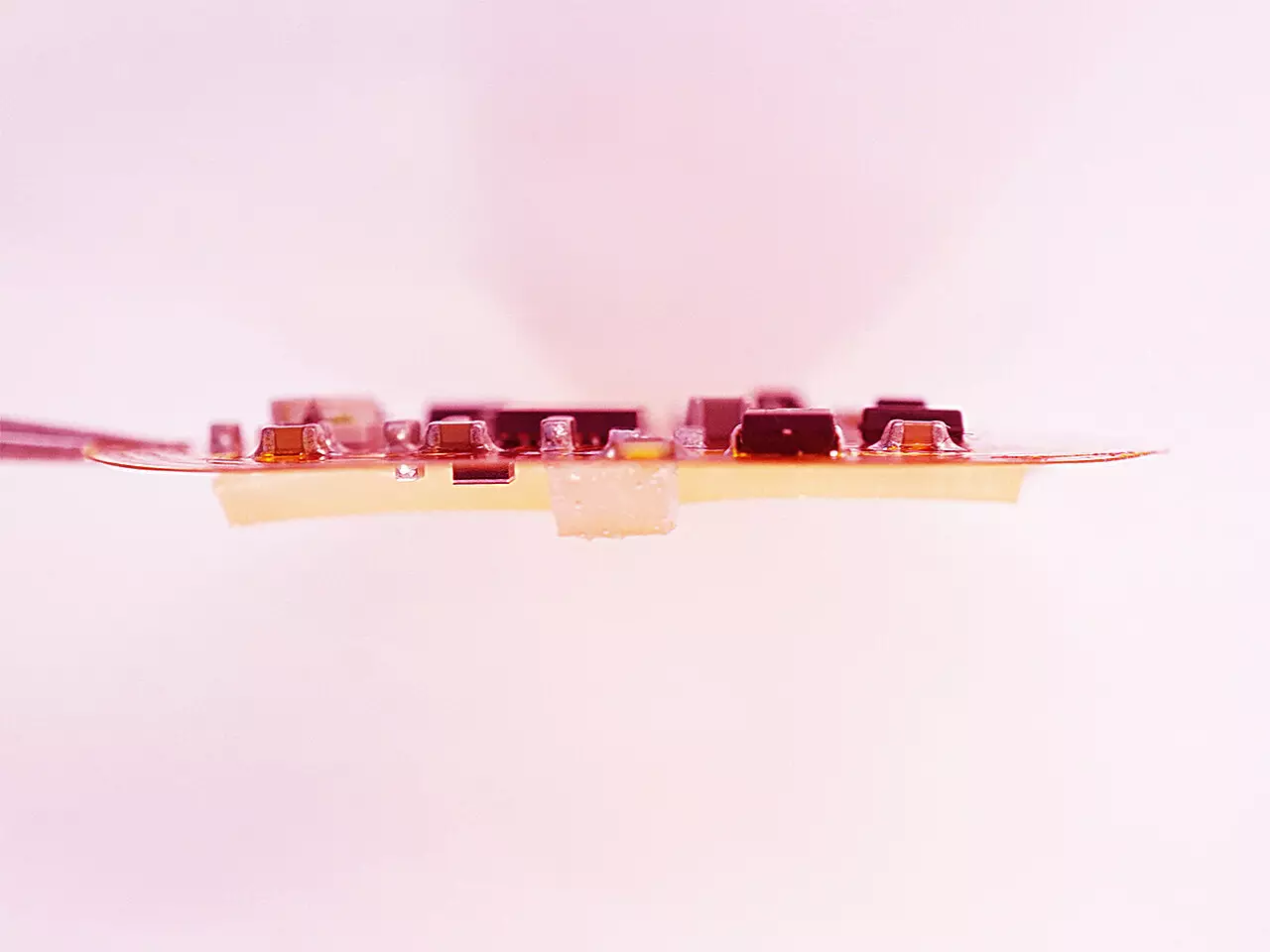In a groundbreaking study published in Science, Prof. Bozhi Tian’s lab has unveiled a cutting-edge prototype for “living bioelectronics” that combines living cells, gel, and electronics in a revolutionary new way. This innovative approach represents a significant leap forward in the integration of electronics with the human body, offering promising new possibilities for the future of medical treatments.
Traditionally, bioelectronics have been limited by the bulkiness and rigidity of electronic devices, which can cause irritation and discomfort when integrated with living tissue. However, Tian’s lab has long been dedicated to overcoming these challenges by exploring how to merge the worlds of electronics and biology. Their latest creation, a series of patches made from sensors, bacterial cells, and a unique gel composed of starch and gelatin, has shown remarkable potential in improving psoriasis-like symptoms in tests conducted on mice.
One of the key innovations in Tian’s study is the incorporation of living cells into the bioelectronic system. By adding a layer of S. epidermidis bacteria to the gel-based device, the researchers were able to harness the healing properties of these microbes to reduce inflammation and monitor skin conditions in real-time. This novel approach not only offers a more comfortable and less irritating alternative to traditional bioelectronics but also opens up new possibilities for the treatment of a variety of medical conditions.
The implications of this research extend far beyond the realm of psoriasis treatment. Tian and his team envision a wide range of applications for their “Active Biointegrated Living Electronics” platform, from speeding up wound healing in diabetic patients to creating specialized devices that can interact with specific types of cells or tissues. The possibilities are endless, and the researchers are eager to explore new avenues for improving medical treatments through the integration of living cells with electronics.
As Prof. Tian reflects on the journey that led to this breakthrough, he emphasizes the importance of pushing the boundaries of what is possible in science. His passion for innovation and exploration has driven him to explore the fundamental questions of cell-material interactions and hydrogel chemistry, paving the way for the development of living bioelectronics. Looking ahead, Tian and his team are excited to continue their research and collaborate with other institutions to bring this transformative technology to the forefront of medical innovation.
The development of living bioelectronics represents a major milestone in the field of medical technology. By combining the unique properties of living cells with the versatility of electronic devices, researchers have opened up a new frontier for the treatment of various medical conditions. As this research continues to evolve, the potential for improving patient outcomes and enhancing the quality of medical care is truly limitless.


Leave a Reply